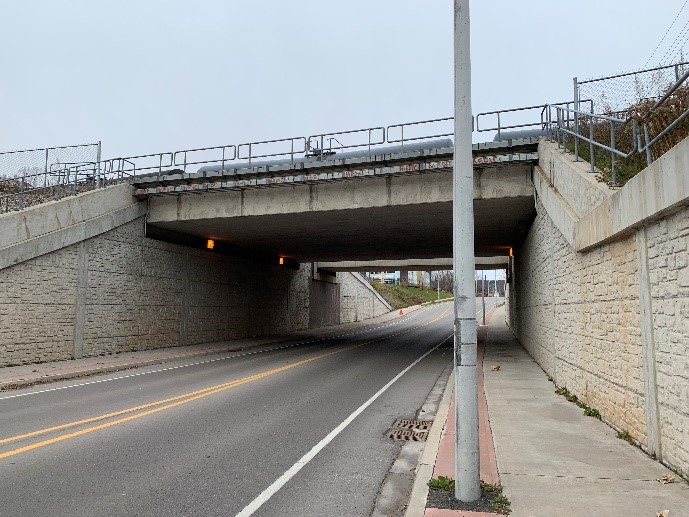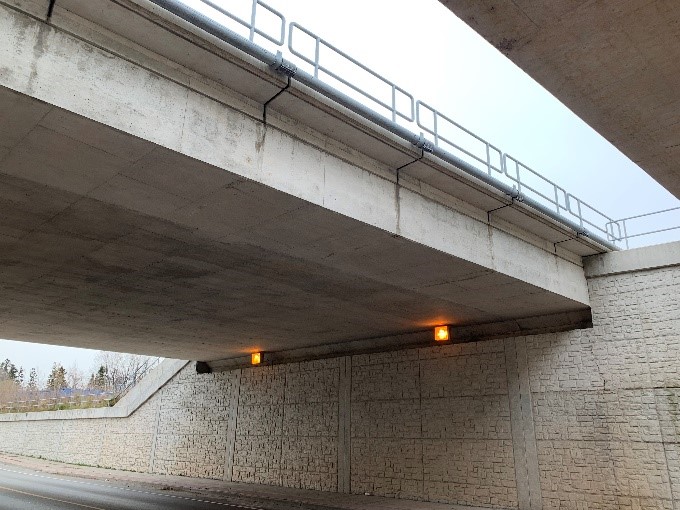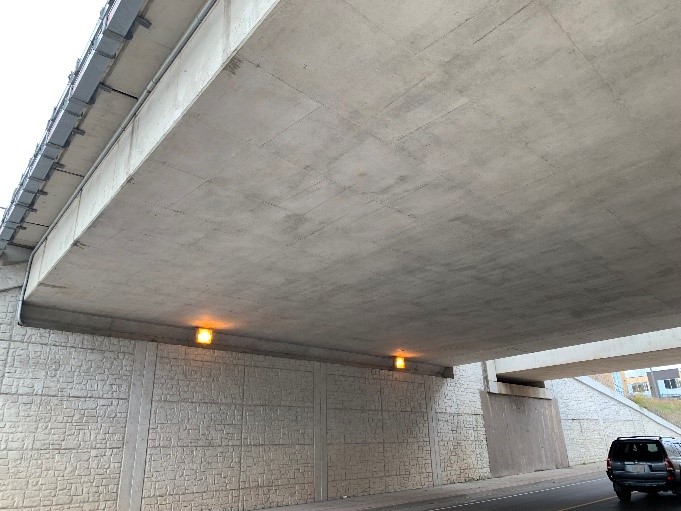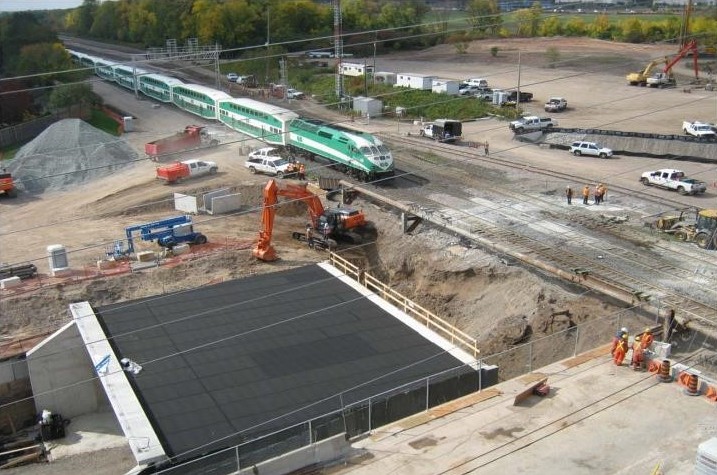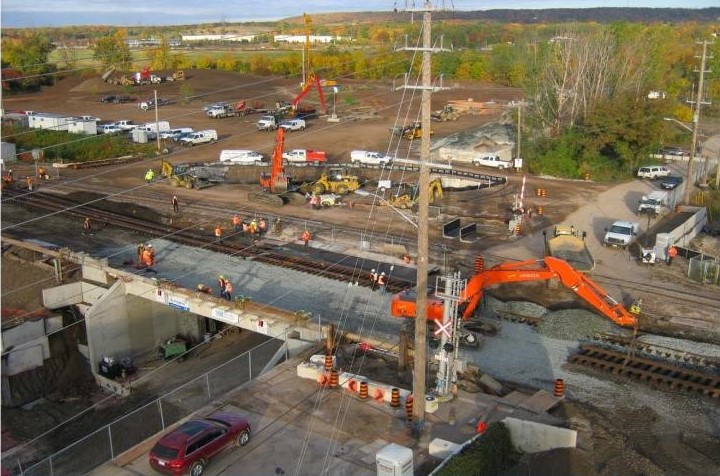How do you build a bridge under four live railroad tracks without disrupting rail traffic? Answer: You don’t! If you’ve ever worked around railroad companies, you know that freight is king. When it needs to move, it needs to move!
Prior to the construction of this grade separation bridge in 2012 and 2013, there was a very busy grade crossing where vehicles and pedestrians had to cross over the tracks. This high-volume railroad corridor carries VIA Rail, GO Transit, and freight traffic up to 129 km/hr. King Road was getting busier, and so was rail service. And the City of Burlington wanted to develop the area between the tracks and Highway 403, which was largely undeveloped at the time (see Figure 1).
Today that crossing is gone, replaced by this structure, which carries four railroad tracks over the main bridge, and a smaller secondary structure to the north carrying Indian Creek over the same road (see Figure 2).
This $22 million bridge project finished in 2013 included a new bridge over King Road to separate the railroad tracks from vehicular traffic (called a grade separation) as well as an aqueduct to carry Indian Creek over the same road (see Figure 3). It was designed by the engineering team Hatch Mott MacDonald and built for the City of Burlington by Dufferin Construction of Oakville, one of the leading construction companies in the GTA.
Click this link for my article on the Indian Creek aqueduct.
The railroad bridge is a large open-ended box structure that was built offline to the south of the tracks and later pushed into place by means of a powerful hydraulic jacking system. The jacking of the bridge was planned and executed by Western Mechanical of Barrie, Ontario.
The box floor is buried under the roadway and the walls are covered with a cast-in-place fascia wall. So, the only portion of the structure visible today is the roof overhead, spanning approximately 14 metres between the structural walls (12 metres between fascia walls) allowing for a vehicle lane, a bicycle lane, and a sidewalk in each direction (see Figure 2 above and Figure 3 below).
The main challenge was to build the bridge with little to no disruption to rail traffic and to King Road. It had to be built offline and pushed into place. This is known as Accelerated Bridge Construction. This highly innovative method of construction allowed the majority of the operation to take place off to the side without interfering with rail or vehicle traffic. Once the structure was complete, it was pushed into position using large hydraulic jacks (see Figures 4 and 5).
On Thanksgiving weekend of 2012, over the course of 72 hours, the box structure was pushed into place with four large hydraulic jacks. The railroad tracks had to be removed and completely excavated out of the way to make room for the new bridge (see Figure 5) and completely replaced after the operation — all in the same weekend!
This was the largest box jacking operation ever performed in Ontario! For a great video of the operation, click here to go to Hatch Mott MacDonald’s website.
The long concrete walls flanking the bridge on both sides are cast-in-place, poured against the caisson walls (deep drilled concrete foundation walls) built to support the excavation. They are more for aesthetic value than actual structural walls. The form liner used gives the walls the appearance of stone (driving by it, anyway), which also deters graffiti artists to a certain extent (see Figure 2 above, and Figure 6 below).
You would never know how unique this bridge is or how it was built just by driving underneath it. The amount of engineering and planning that went into this Accelerated Bridge Construction far exceeds your regular single span bridge. Next time you drive underneath it just remember — good engineering makes it look easy! Drive safe!

Special thanks are given to Mike Peart, project manager with Dufferin Construction, and Rob Doucet, project manager with Western Mechanical.
Have you seen an interesting building or piece of infrastructure in or around Burlington that you’d like Eric Chiasson, your personal engineer, to write about?
Send us your suggestions, comments, or questions to articles@local-news.ca and we’ll see what Eric can find out!
Sources:
Canadian Consulting Engineer. King Road/CN Grade Separation. Url: https://www.canadianconsultingengineer.com/awards/pdfs/2014/B14_KingRoadCNGrade.pdf (accessed Mar. 13, 2022).
Hatch. King Road at CN Grade Separation. Url: https://www.hatch.com/Projects/Infrastructure/King-Road-at-CN-Rail-Grade-Separation (accessed Mar. 13, 2022).
Kelso Coatings. King Road Underpass. Url: https://kelsocoatings.com/projects/king-rd-underpass/ (accessed Mar. 13, 2022).
TAC Technical Excellence Award – 2014. King Road/CN Grade Separation, submitted by Hatch Mott MacDonald and Amec, March 18, 2014. Url: http://Conf.tac-atc.ca/english/annualconference/tac2014/s-37/sinke.pdf (accessed Mar. 13, 2022).
For more information on the author: https://www.linkedin.com/in/eric-chiasson-10601082




